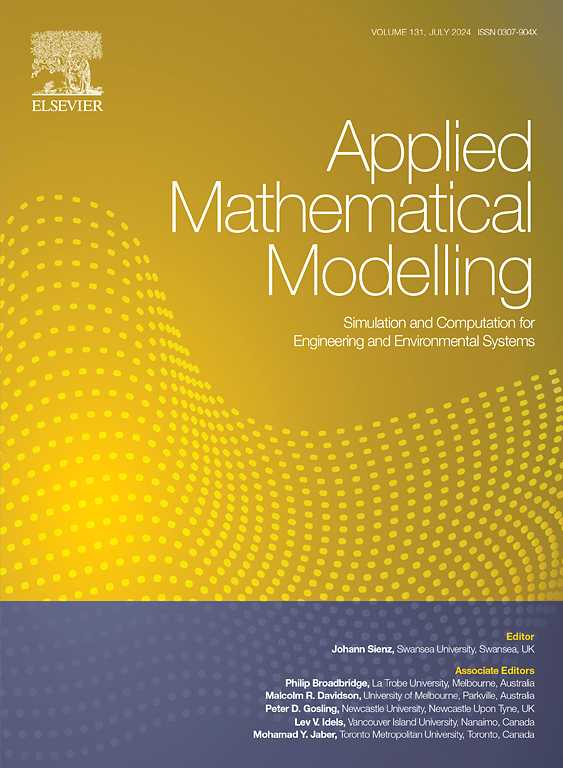Numerical discretization errors of fluid-structure interaction model in pressurized pipeline systems
IF 4.4
2区 工程技术
Q1 ENGINEERING, MULTIDISCIPLINARY
引用次数: 0
Abstract
The fluid-structure interaction (FSI) effects in pressurized pipeline systems may induce pipe vibrations, leading to more severe water hammer incidents. Therefore, establishing an FSI model for liquid-filled pipelines and developing efficient and accurate numerical simulation methods are crucial. These advancements enable precise prediction of FSI water hammer phenomena, which is essential for the design and protection of pressurized pipeline systems. When using the FSI four-equation axial model for water hammer calculations, techniques such as space-line interpolation (SLI), time-line interpolation (TLI), or wave speed adjustment (WSA) are commonly employed for grid processing. However, these techniques inevitably introduce additional numerical discretization errors. Existing literatures have primarily conducted quantitative analyses by comparing numerical results of different grid processing techniques with exact solutions or experimental data, lacking a theoretical analysis. To address this gap, this study establishes an equivalent hyperbolic differential equations (EHDE) approach for numerical discretization error analysis of the FSI four-equation axial model. EHDEs for SLI, TLI, and WSA are specifically derived to analyze how these techniques generate numerical discretization errors and the factors influencing these errors during the solution process. Theoretical findings are validated through numerical case studies. The results indicate that SLI introduces non-physical numerical dissipation terms into the fluid equations of the FSI four-equation axial model. TLI transforms a single fluid pressure wave into a superposition of two pressure waves with different wave speeds, causing additional numerical dissipation and dispersion due to this non-physical superposition. WSA introduces numerical errors when adjusting wave speeds artificially. Among the three grid processing techniques, SLI exhibits the highest sensitivity to grid resolution, followed by TLI, while WSA shows the least sensitivity. Under the identical spatial grid conditions, SLI yields the lowest computational accuracy, with the largest mean absolute error (MAE) compared to the recursive exact solution. TLI follows next, whereas the WSA demonstrates the smallest MAE. These findings enhance the theoretical analysis of numerical discretization errors in the FSI four-equation axial model, providing theoretical support for selecting grid processing techniques during the solution process.
求助全文
约1分钟内获得全文
求助全文
来源期刊

Applied Mathematical Modelling
数学-工程:综合
CiteScore
9.80
自引率
8.00%
发文量
508
审稿时长
43 days
期刊介绍:
Applied Mathematical Modelling focuses on research related to the mathematical modelling of engineering and environmental processes, manufacturing, and industrial systems. A significant emerging area of research activity involves multiphysics processes, and contributions in this area are particularly encouraged.
This influential publication covers a wide spectrum of subjects including heat transfer, fluid mechanics, CFD, and transport phenomena; solid mechanics and mechanics of metals; electromagnets and MHD; reliability modelling and system optimization; finite volume, finite element, and boundary element procedures; modelling of inventory, industrial, manufacturing and logistics systems for viable decision making; civil engineering systems and structures; mineral and energy resources; relevant software engineering issues associated with CAD and CAE; and materials and metallurgical engineering.
Applied Mathematical Modelling is primarily interested in papers developing increased insights into real-world problems through novel mathematical modelling, novel applications or a combination of these. Papers employing existing numerical techniques must demonstrate sufficient novelty in the solution of practical problems. Papers on fuzzy logic in decision-making or purely financial mathematics are normally not considered. Research on fractional differential equations, bifurcation, and numerical methods needs to include practical examples. Population dynamics must solve realistic scenarios. Papers in the area of logistics and business modelling should demonstrate meaningful managerial insight. Submissions with no real-world application will not be considered.
 求助内容:
求助内容: 应助结果提醒方式:
应助结果提醒方式:


